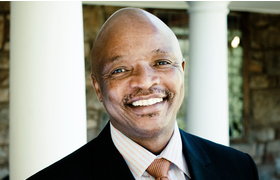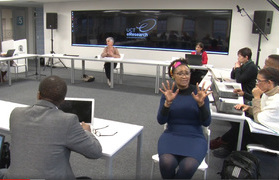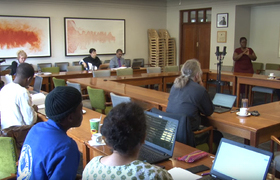Joint Statement: Excessive Use of Force by the South African Police Service (SAPS)
Released: 23 October 2015
23 October 2015 | Story by Newsroom

We are deeply concerned about the excessive use of force displayed by the SAPS Public Order Policing members against unarmed protesting students at Parliament and other parts of South Africa this week. These were not isolated incidents as we have witnessed an intensification of police violence against protesting citizens, particularly poor and marginalised people in recent years. The Marikana Massacre remains at the forefront of our minds. Last year the SAPS paid out close to R200 million in civil claims due to excessive use of force by its members (including shootings), money that could have been better spent on education and healthcare.
The National Development Plan, as well as the SAPS' own Strategic Plan calls for the demilitarisation of the SAPS, which should have a considerable impact on reducing incidents of police violence. The Marikana Commission of Inquiry has recommended a review of Public Order Policing in South Africa by a panel of experts. Both these recommendations should be implemented as a matter of urgency.
While acknowledging the challenges of policing in South Africa, we call on all members of the SAPS to adhere to the legal requirements set out in Section 9 of the Regulation of Gatherings Act 205 of 1993, which requires SAPS members to pursue all avenues to avoid the use of force.
We support Prof Pierre De Vos' comments of earlier this week that: “Members of the SAPS who use force without complying with the provisions of Section 9 of the Regulation of Gatherings Act must be prosecuted for assault and disciplined accordingly. Members of the SAPS who comply with the formal requirements of Section 9 of the Regulation of Gatherings Act, but nevertheless use excessive force against peaceful protesters must be prosecuted”.
As a top priority the SAPS Public Order police must be provided with the legally required skills to respond to peaceful protests and gatherings without having to resort to using any kind of force.
UCT Safety and Violence Initiative (SaVI)
UCT Centre for Criminology
 This work is licensed under a Creative Commons Attribution-NoDerivatives 4.0 International License.
This work is licensed under a Creative Commons Attribution-NoDerivatives 4.0 International License.
Please view the republishing articles page for more information.









